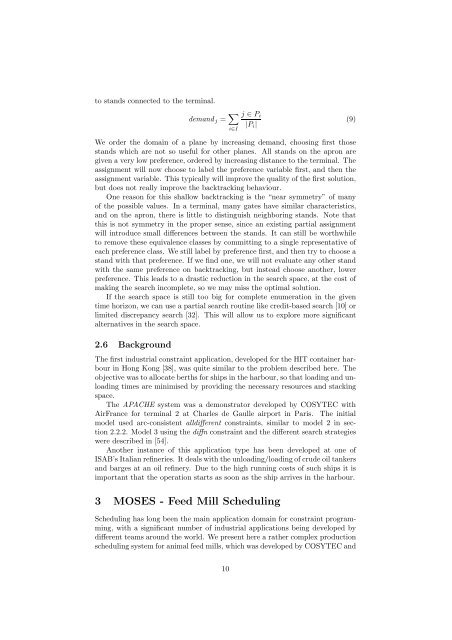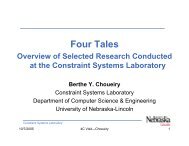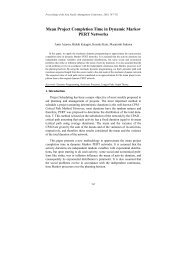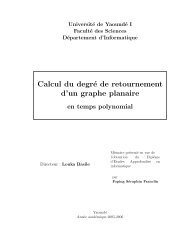Models for Global Constraint Applications - Cork Constraint ...
Models for Global Constraint Applications - Cork Constraint ...
Models for Global Constraint Applications - Cork Constraint ...
Create successful ePaper yourself
Turn your PDF publications into a flip-book with our unique Google optimized e-Paper software.
to stands connected to the terminal.<br />
demandj = <br />
i∈I<br />
j ∈ Pi<br />
|Pi|<br />
We order the domain of a plane by increasing demand, choosing first those<br />
stands which are not so useful <strong>for</strong> other planes. All stands on the apron are<br />
given a very low preference, ordered by increasing distance to the terminal. The<br />
assignment will now choose to label the preference variable first, and then the<br />
assignment variable. This typically will improve the quality of the first solution,<br />
but does not really improve the backtracking behaviour.<br />
One reason <strong>for</strong> this shallow backtracking is the “near symmetry” of many<br />
of the possible values. In a terminal, many gates have similar characteristics,<br />
and on the apron, there is little to distinguish neighboring stands. Note that<br />
this is not symmetry in the proper sense, since an existing partial assignment<br />
will introduce small differences between the stands. It can still be worthwhile<br />
to remove these equivalence classes by committing to a single representative of<br />
each preference class. We still label by preference first, and then try to choose a<br />
stand with that preference. If we find one, we will not evaluate any other stand<br />
with the same preference on backtracking, but instead choose another, lower<br />
preference. This leads to a drastic reduction in the search space, at the cost of<br />
making the search incomplete, so we may miss the optimal solution.<br />
If the search space is still too big <strong>for</strong> complete enumeration in the given<br />
time horizon, we can use a partial search routine like credit-based search [10] or<br />
limited discrepancy search [32]. This will allow us to explore more significant<br />
alternatives in the search space.<br />
2.6 Background<br />
The first industrial constraint application, developed <strong>for</strong> the HIT container harbour<br />
in Hong Kong [38], was quite similar to the problem described here. The<br />
objective was to allocate berths <strong>for</strong> ships in the harbour, so that loading and unloading<br />
times are minimised by providing the necessary resources and stacking<br />
space.<br />
The APACHE system was a demonstrator developed by COSYTEC with<br />
AirFrance <strong>for</strong> terminal 2 at Charles de Gaulle airport in Paris. The initial<br />
model used arc-consistent alldifferent constraints, similar to model 2 in section<br />
2.2.2. Model 3 using the diffn constraint and the different search strategies<br />
were described in [54].<br />
Another instance of this application type has been developed at one of<br />
ISAB’s Italian refineries. It deals with the unloading/loading of crude oil tankers<br />
and barges at an oil refinery. Due to the high running costs of such ships it is<br />
important that the operation starts as soon as the ship arrives in the harbour.<br />
3 MOSES - Feed Mill Scheduling<br />
Scheduling has long been the main application domain <strong>for</strong> constraint programming,<br />
with a significant number of industrial applications being developed by<br />
different teams around the world. We present here a rather complex production<br />
scheduling system <strong>for</strong> animal feed mills, which was developed by COSYTEC and<br />
10<br />
(9)









